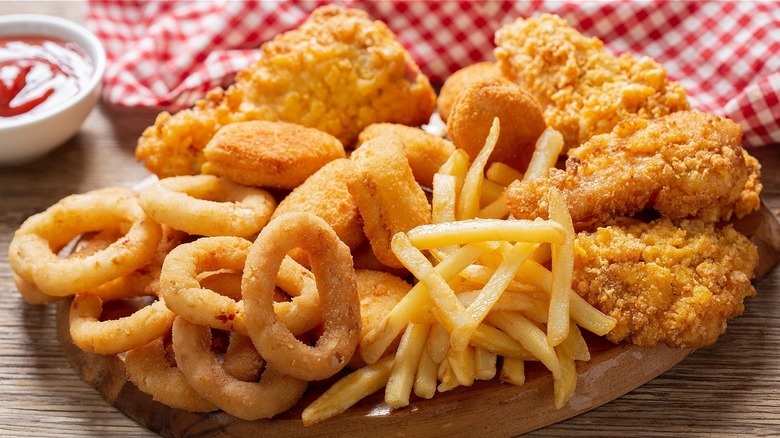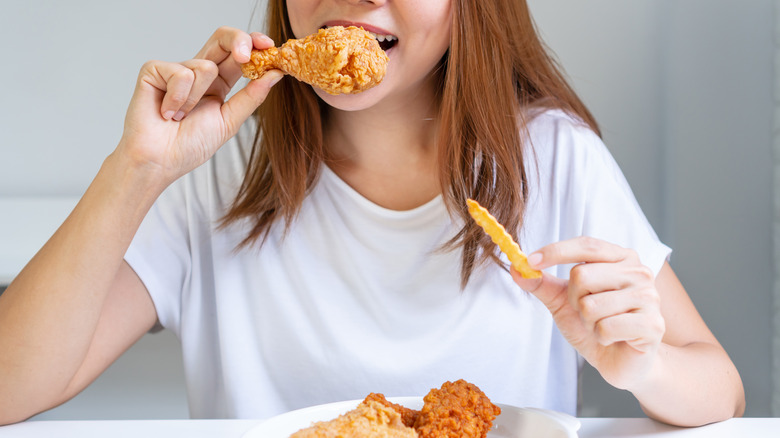The Real Reason Fried Foods Are So Popular Right Now
It doesn't take a scientist to recognize the universal appeal of fried foods — although science certainly has given us plenty of food for thought on the matter, per ScienceDirect. As it happens, the last two years have seen America's love of fried foods intensify, according to The Wall Street Journal, which notes that "more people are ordering French fries with their fast food and seeking solace in fried chicken" in all its forms.
As Restaurant Business Online pointed out in January, the ongoing fried chicken sandwich wars single-handedly contributed a substantial boost to McDonald's bottom line, as well as other fast-food restaurants. Even fried eggs are trending, according to Paste, and air-fried foods are, too. According to a January report from retail analyst The NPD Group, "sales of air fryers increased by 76% over the last two years compared to the previous 24-month period."
But seemingly paradoxically, during the same time period, the world has been in the midst of a health crisis thanks to COVID-19, the effects of which may be less severe in those whose with healthier eating habits (via Zoe). In other words, all other things being equal, it would probably behoove many of us to limit our intake of fried foods for now. And yet, here we are. So, to what do we owe our current appreciation for all things crispy on the outside, tender on the inside, and flavorful in a way that only frying in fat can deliver?
Fried foods taste better than loneliness, boredom, and fear
Fried foods are the most comforting of comfort foods, The Wall Street Journal hypothesizes. The reasons include that fried foods tend to feel nostalgic, and "people go to nostalgic foods to feel better" in challenging times such as these, according to certified nutritionist Vanessa Spiller, per the WSJ.
As a 2018 study published in Nutrición Hospitalaria suggests, consumption of fried food tends to increase in people who aren't feeling all that well emotionally. In that study, the researchers found that Mexican college freshman who presented symptoms of depression were drawn to food higher in fat, as well as sugary food and fast food in general.
"Individuals vulnerable to depression may use food for psychological comfort," the study authors explained. This finding is echoed in the findings of a COVID-age academic paper published in January in the journal Nutrients, which comprised an analysis of scientific studies seeking to illuminate how eating habits changed throughout Europe and the U.K. during the height of the COVID-19 pandemic. Along with a decrease in physical activity, an increase in alcohol consumption, and a decrease in consumption of fresh produce, nine of the studies revealed that people were eating more fried foods, snack foods, and processed foods (which tend to overlap to some extent). The authors of the 2022 paper concluded that the COVID-19 pandemic and its assorted negative consequences (including isolation, unwanted unemployment, and even supply chain issues), were to blame.

